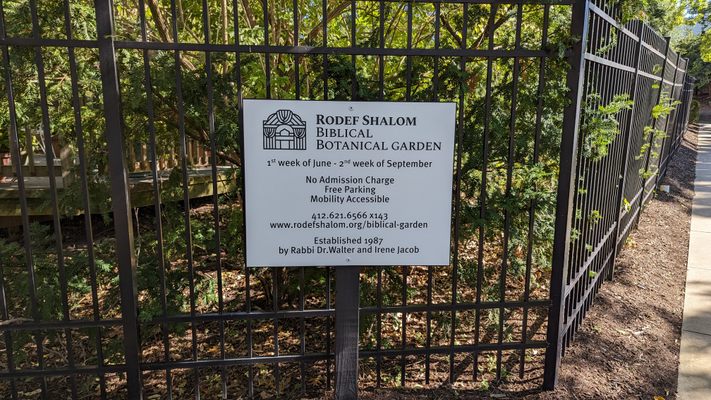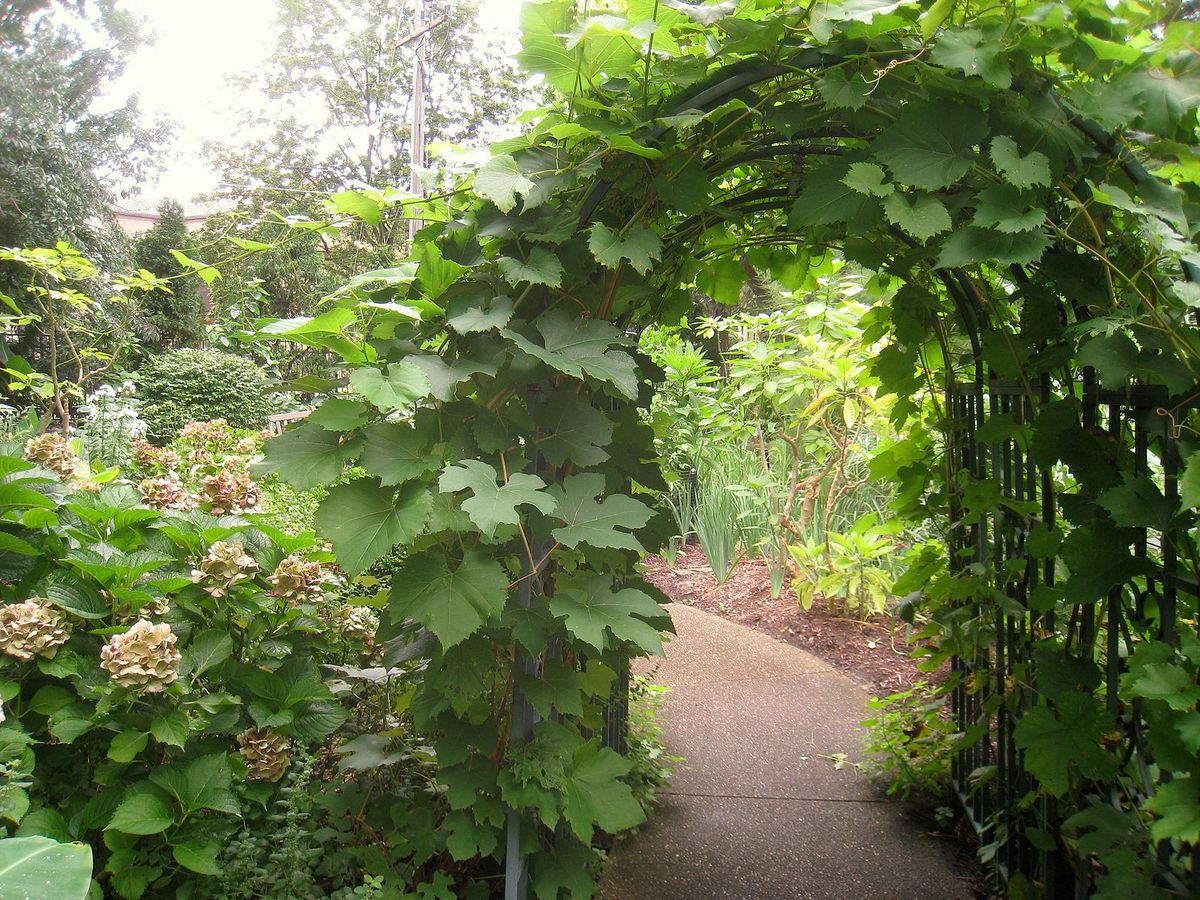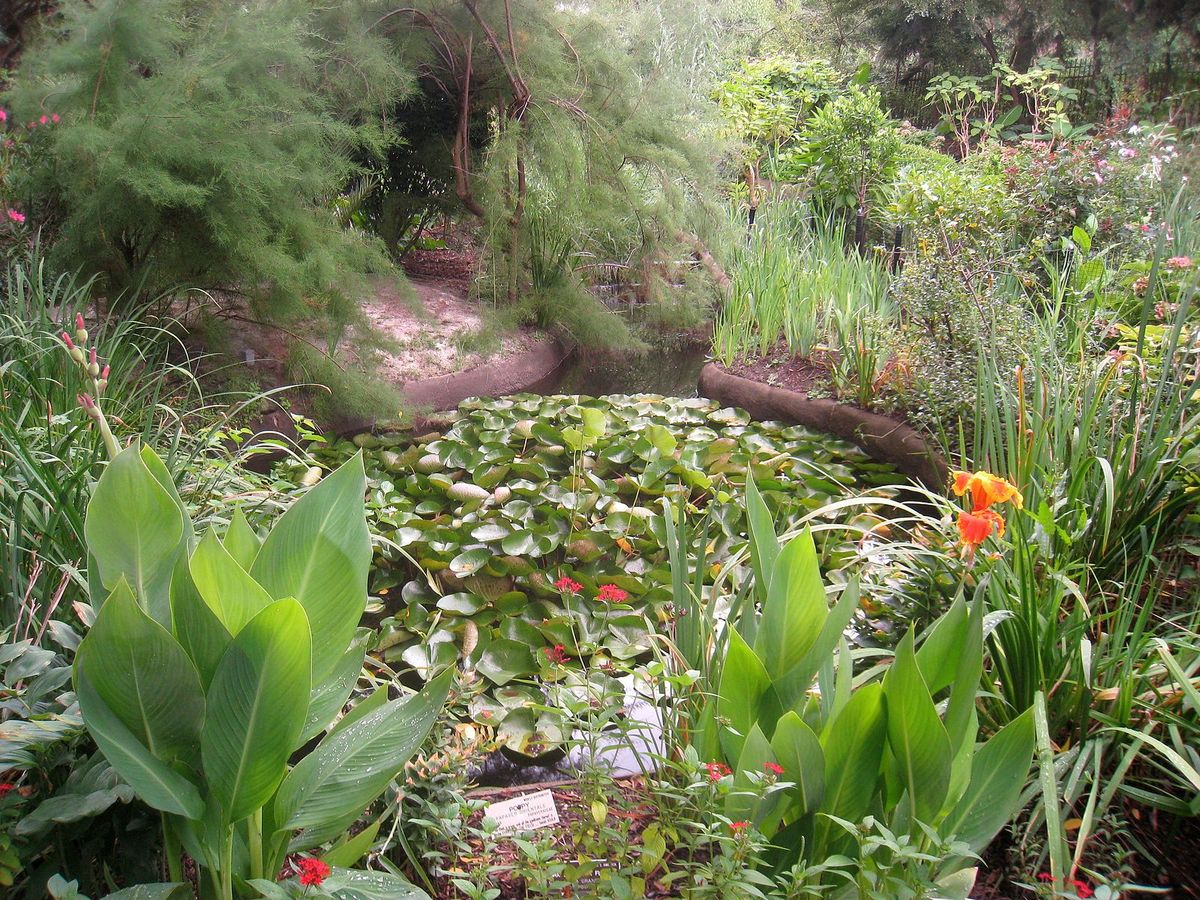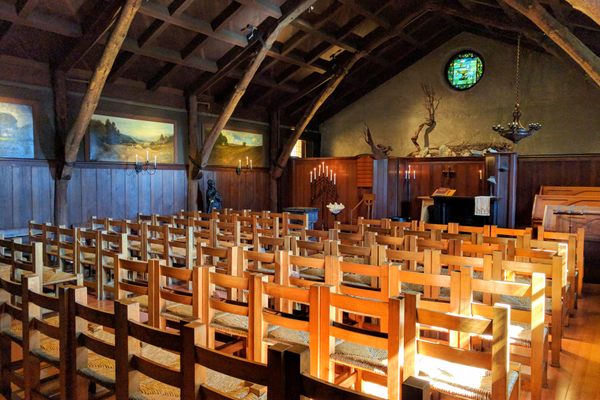About
To walk through this biblical garden is to experience the world of ancient Israel in a direct, embodied way. Seeking to illustrate the metaphor of the Creator as a gardener, Rabbi Walter Jacob and his wife included each of the more than 100 plants referenced in the Old Testament, even going to the extent of finding a caper bush thought to be extinct.
The garden, located behind Rodef Shalom Temple, which houses Pennsylvania's oldest Jewish congregation, now displays more than 100 tropical and temperate plants from biblical times. Olive trees are there, as are figs, pomegranates, and dates (though the Pennsylvania climate makes it so they rarely ever bear fruit.)
Papyrus reeds flank the miniature Jordan River and an herb garden illustrates what ancient Israelites would have grown for their food. Plants are labelled with biblical, common and scientific names as well as marked with scriptures where they can be found.
Walking among these plants brings the Old Testament to life: Sweets were so hard to come by a "land flowing with milk and honey" would have set any mouth to watering, and a fig leaf does make for a decent loincloth to cover one's nakedness. Each year the garden has a new theme. One year was "paradise"; another explained the meanings of different plants in various faiths.
The garden is free to visit between the months of June and September. During the winter the plants must be replanted in a greenhouse to ensure their survival. This requires a great deal of labor and expense, thus donations are greatly appreciated.
Related Tags
Know Before You Go
June 1 to September 15 – Sunday through Thursday 10 a.m. – 2 p.m. Wednesday also 7 p.m.- 9 p.m. (June-August) Saturday Noon – 1 p.m. No admission charge (but donations gratefully accepted to cover costs of caring for plants), handicapped access. Group Tours (eight or more) by appointment.
Community Contributors
Added By
Published
February 15, 2017








































